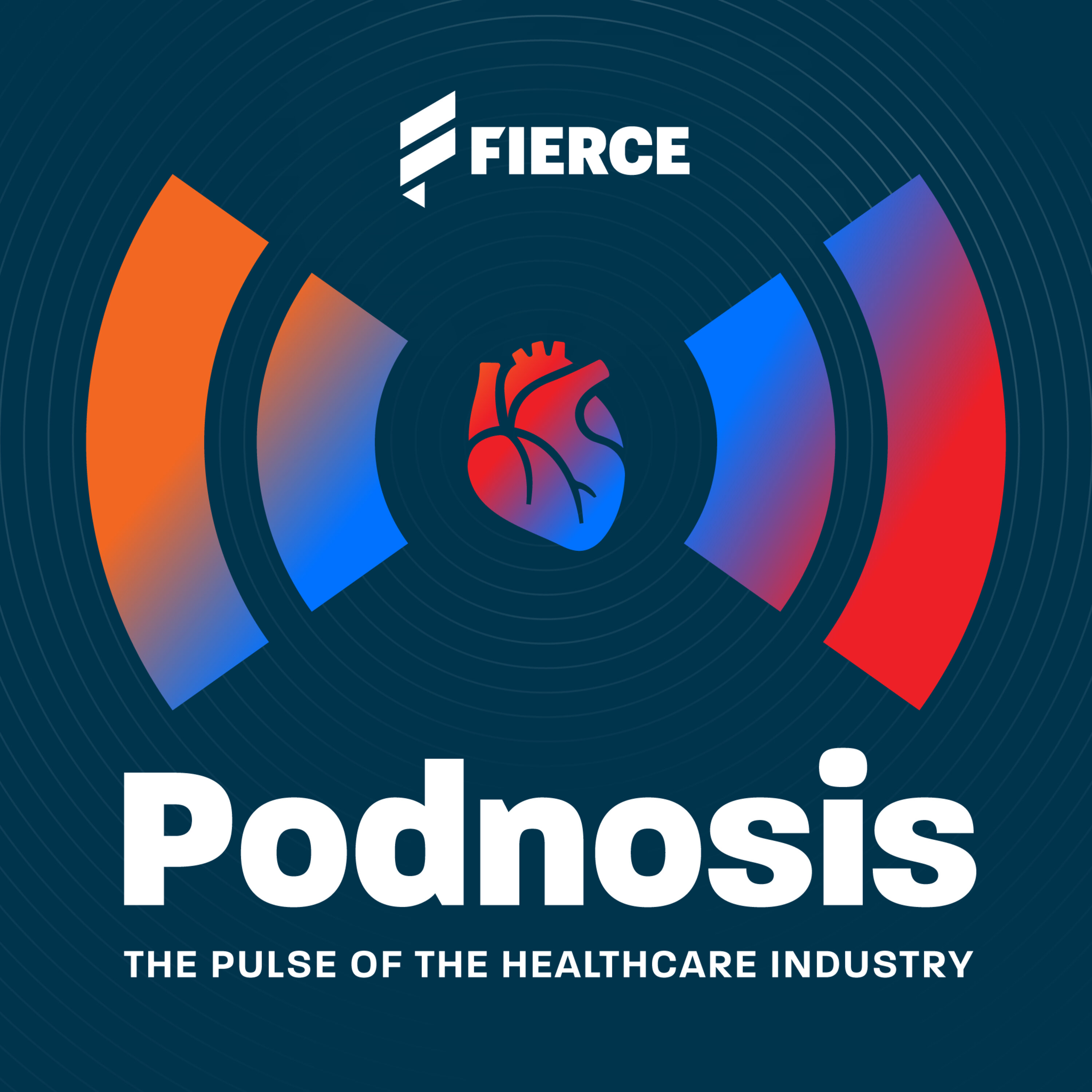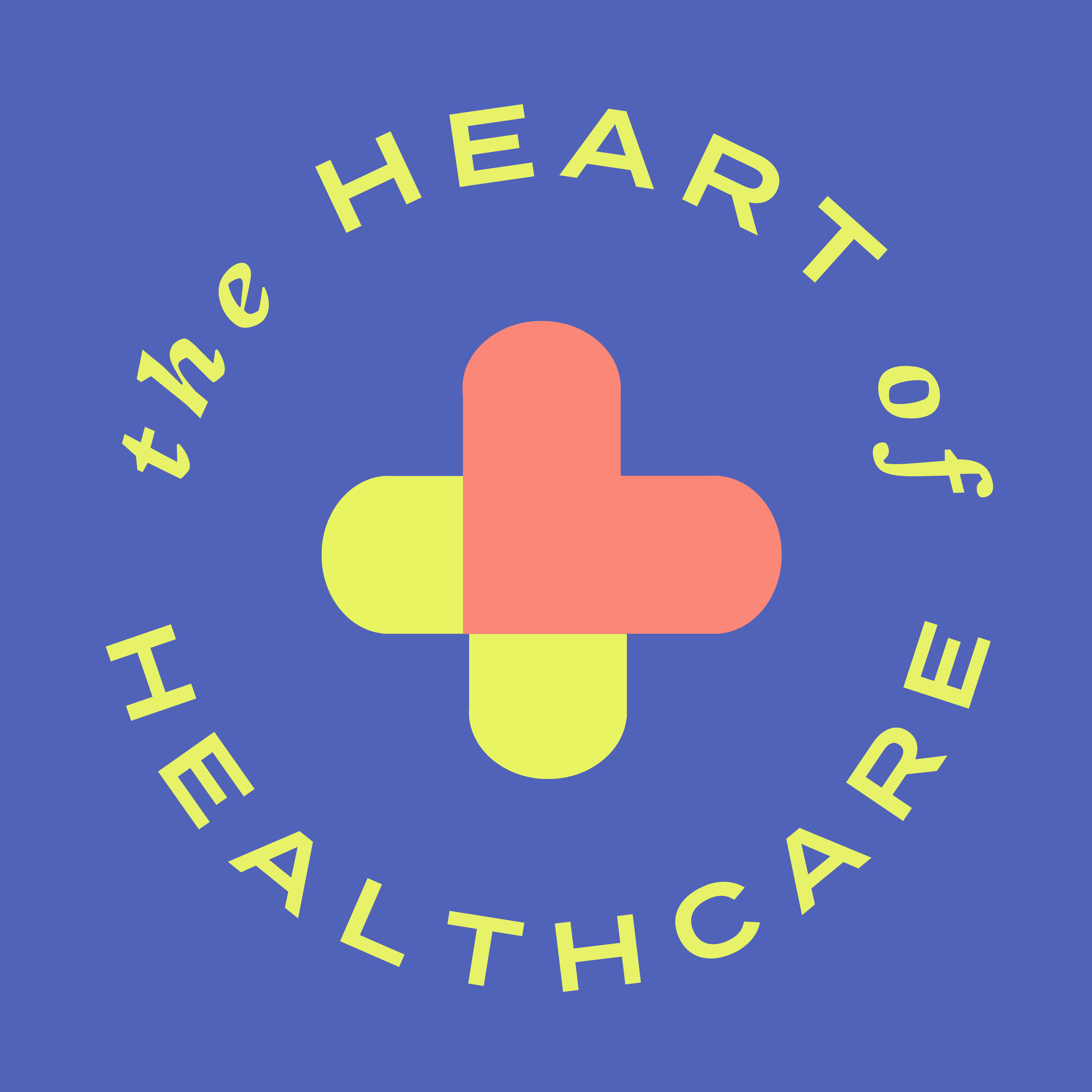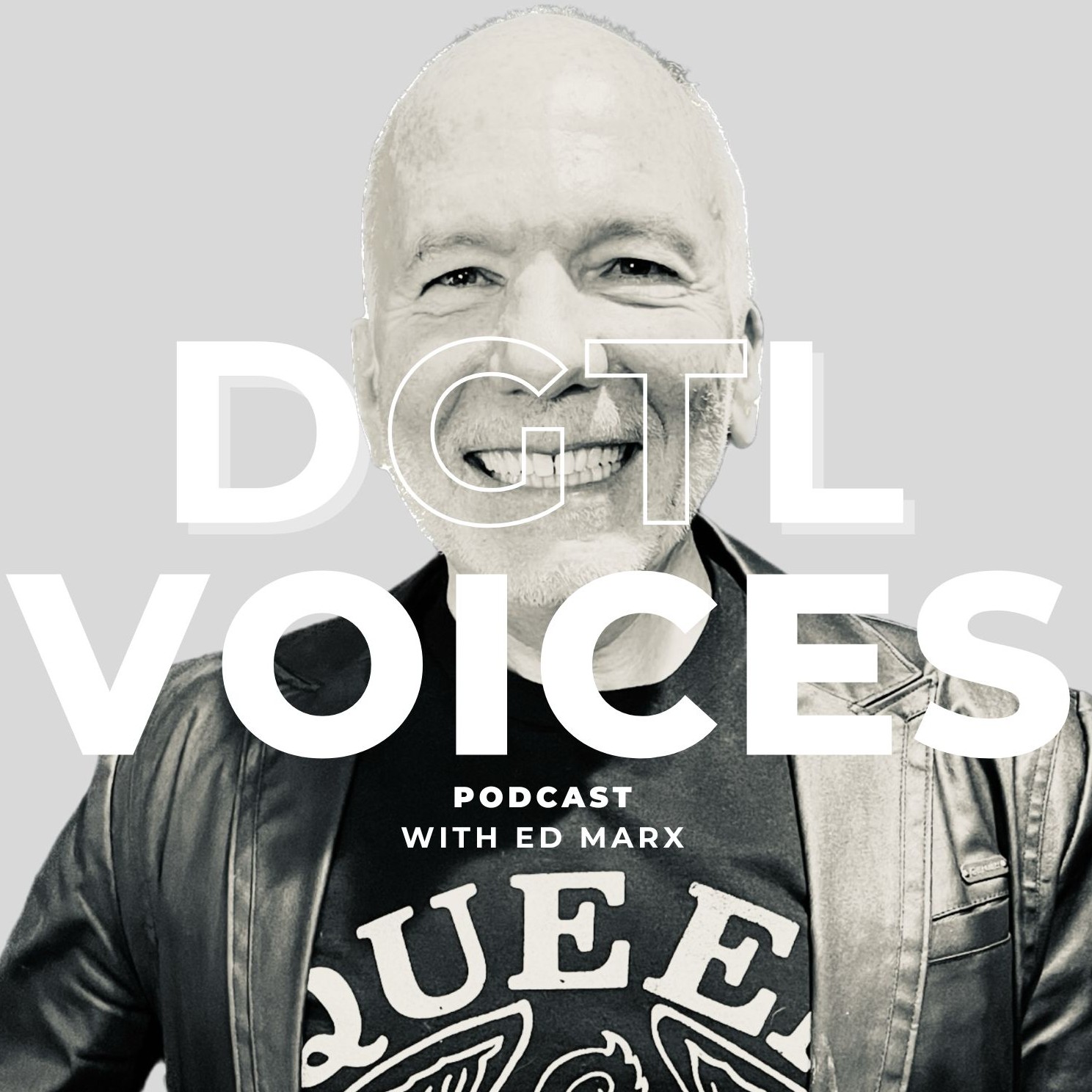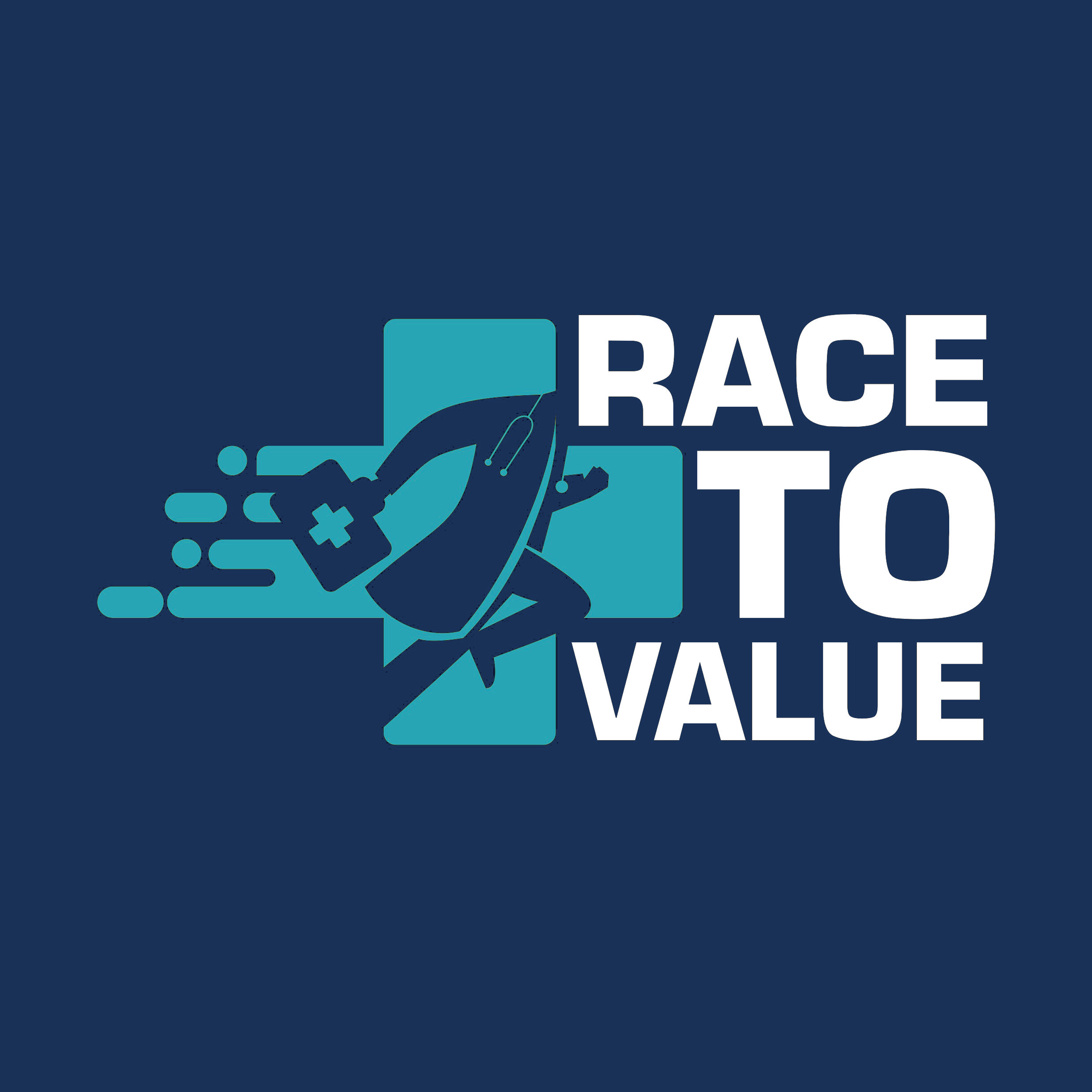.jpg)
ChilCast: Healthcare Tech Talks
ChilCast: Healthcare Tech Talks
Achieving Transformation and Defining Health IT Value with John Glaser
On this episode of the Chilcast, host John Moore III interviews John Glaser, Executive in Residence at Harvard Medical School and healthcare [technology] industry veteran. The conversation delves into the factors that determine whether a transformation strategy will be successful, and how to think about assessing the value of healthcare IT implementations, highlighting the need for organizations to have a customized, agreed-upon approach based on their specific goals.
Key Takeaways:
- Assessing the value of digital health and health IT implementations in the healthcare industry requires a tailored approach based on the specific needs of each organization.
- Financial return on investment (ROI) should not be the sole metric for assessing the value of technology, as it can overlook other important factors such as patient experience and clinical outcomes.
- There are 5 specific factors required for any organizational transformation strategy to succeed.
- Collaboration among multiple stakeholders is crucial for driving value and reducing costs in healthcare. Technology needs to be seen as an enabler of strategic initiatives, not as the initiative itself.
More from John Glaser, PhD:
- Recent Harvard Business Review articles:
- Learn more about John's courses at Harvard Medical School:
John Moore III: [00:00:15] Welcome back to the Chillcast. I am the managing partner of Chilmark Research and your host, John Moore, the third. Today we are excited to introduce a new mini series as part of the Chillcast, delving into how different health care industry stakeholders think about assessing the value of digital health and health IT implementations. This series ties into a new collaborative effort. The Health Impact Project that Chilmark convened earlier this year with Pam and Susan from Maestro Strategies, Curtis Peterson from Kingfisher Advising, and Marie Copoulos from Horder Health. After hearing ad nauseum over the last few years how important it is for new technologies to show efficacy in the current economic climate, we decided that it was time to come up with a better metric for evaluating the impact of technology than a standard, oversimplified financial calculation like ROI. This series is intended to catalyze industry conversations we see as necessary to reach consensus on a new model of value that c-suites at care organizations, payers, technology developers, investment firms, and more can apply to their own initiatives. I am thrilled to start this series with none other than industry legend John Glaser.
John Moore III: [00:01:25] John is an executive in residence at the Harvard Medical School and a lecturer at the Wharton School. He is a former vice president of Population Health at Cerner Corporation. Before that, he was CEO at Siemens Health Services and before Siemens. John was the chief information officer at Partners Healthcare. John was the founding chair of the College of Healthcare Information Management Executives, which many of you just know by the acronym Chime, and the past president of the Healthcare Information and Management Systems Society. He is former Senior Advisor to the office of the National Coordinator for Health Information Technology. So welcome, John. So, John, you have had an impressive career spanning many of healthcare's leading organizations and various stakeholders. You served as a consultant at Arthur D little, a CIO at partners, a vendor executive at Siemens and Cerner, an advisor to the ONC, a board member to many companies and now executive in residence and faculty member at the Harvard Medical School. From your perspective, what sector of the industry is having the most success deploying health, IT and digital health and driving ROI value and improved outcomes?
John Glaser: [00:02:33] John. Well, I think it's a terrific question. All your questions are terrific ones. I think a couple of ways to look at it. I mean, one of which is, you know, McKinsey came out several years ago with a study that looked at the degree of digitization of various industries. And so this is travel banking, etcetera. And within the health care sector, they found that health plans were further ahead than health systems, which were further ahead than life sciences companies. So in an absolute sense, if you look at the percent of digitization, no matter how you measure that, you can arrive at ranking. That being said, that's probably not the, you know, the most useful measure, because health plans don't may not really care where health systems are. They care where other health plans are. So I actually think the right way to look at it, John, is relative to the goals and the context of the organization, what level of automation is necessary for them to do what they want to do? So, for example, you could be a large academic health system and have a very different set of goals and value of supporting patient care and research and education than a small hospital. I mean, my brother lives in very remote Alaska, and Seward Community Hospital has three beds.
John Glaser: [00:03:32] You know, you're not going to find the same level of digitization there and they don't need it, frankly. So I think it's hard to say it's ahead because it's in the context of where you are, you know, what you're trying to accomplish and whether the level of it introduction or digital health introduction has really helped you do that. Also find and you know, John, you see this is to a degree it is less dependent on the technology. It's more dependent on the skill of the organization and applying it, you know, to what degree they reengineer processes, to what degree they actually measure, you know, whether things are getting better, to what degree they hold people accountable. So, I mean, there's all kinds of, you see, real variation across organizations in management skill. You see varying degrees of variability in terms of context and objectives, etcetera. So it's a fair question, but it's a hard one to answer because there's no sort of gold standard, you see. You know, it's like height. You know, you can there's one way to measure height, but there's no one way to assess this.
John Moore III: [00:04:28] So you mentioned at the beginning of that that you saw one of the considerations around automation. So do you think that one of the key pieces of health it is to just help with administrative automation and helping to kind of streamline certain workflows and processes?
John Glaser: [00:04:44] Yeah, I mean, I think there's there's a number of things that that it can be really good at, you know, some of which is to take basic administrative processes, coding of medical record, hiring people, scheduling appointments, and really making those a lot more efficient, effective and tailor, you know, tailored to you and me as unique consumers. And that's in addition to the processes I think are sort of quasi clinical, like utilization management, which is quasi clinical, clinical, but it's also administrative, which is on top of very clinical stuff like writing an order, you know, or interpreting a radiology image. So I think a core set of this thing is a process, is making the process better. Know, I think, John, one of the things that we've learned by looking at organizations over the years is at the end of the day, all organizations are defined by a small number of processes that make or break them. So if you say, what does a restaurant do? It does three things. It does menu design, food preparation and weight service. And if it screws any one of those things up, it's over. You know, you have a lousy menu and your servers or servers are surly, etcetera. So, you know, you take those core processes and is a health system. It's access, it's doctors making decisions, and you really work them. You make sure that those are really, really good. They're not always clinical. They can cover the gamut.
John Moore III: [00:05:55] Yeah, that's one of the things that we're definitely hearing a lot at Chilmark is being reminded that technology isn't necessarily the solution, it is a part of a process. And so you really need to figure out your workflows and your people to make sure that those processes are successful. Something else that you mentioned is that process piece. So how do you hold people accountable to that transformation effort to actually implementing new workflows, implementing new processes as you look to digitize a system or digitize a care pathway?
John Glaser: [00:06:23] Well, I think if you say, listen. We want to improve the patient experience, the front end process that patients encounter, and that's asking questions, getting appointment, all that stuff that goes with that. And there we are. You and I are in the boardroom saying, we really want to do that, because that's just becoming what you got to do. If you want to remain competitive and it's, quote, the right thing to do. Then the question becomes is, well, what processes are we talking about and who's accountable for them now. Mean there's somebody accountable for scheduling, you know. And you can fair enough. You can get a very decentralized etcetera. But what we want to do is take those people who own it. Now say, listen, here's what we got to do. We want to work with you to make these better. And we're putting you in charge. We're going to push this thing down as far into the trenches as we possibly can, because you know what's going on. This is a change exercise, and we want you bought in. We're more likely to get your buy in if you feel like you sort of control the process rather than we're being a victim of it.
John Glaser: [00:07:15] And so, you know, we're going to, you know, do this. And, you know, we're looking forward to you saying, here's some goals we have. How would we measure those? What resources do you need if you hit a roadblock? How do we get you out of it? You know, so you empower the front end. And that includes measures of accountability. And frankly, if they don't deliver the goods, you say, hey, listen, it's not happening. And maybe it's something we need to do. Like, you know, there's a chief of services in the way, but maybe we just need to change players on the team, you know, frankly, to be about this kind of stuff. So it's like, John, any undertaking in an organization we need to do X, who do we want to put in charge of X? Do we have have enough of a long leash and enough understanding of what to do and the skill to do it, and let's let them go, but we'll keep tabs on it. Make sure it's working the way we want it to.
John Moore III: [00:08:00] So that raises the question of how much of this responsibility and accountability should be on the front line staff at an organization versus on the vendor's plate when the vendors coming in to help with implementation and help guide you through the change management and the development of using that technology effectively, should that fall to the vendor, or is it really a front line staffing issue?
John Glaser: [00:08:21] Well, my bias is you want it to be the front line staff. You know, you want your people to be in charge because that's they're smart. They know what they're doing, etcetera. And, you know, the other thing, John, is remember, whatever change we're doing now, we're not, you know, five years from now, three years from now, four years from now, we'll still be doing changes. So I want them to become good at it and become experienced and learn how to do it to the degree that they're not as far along as we want. So I really want them to do it because they're in a better position to know what to do, and because we want them to develop the skill to do it. Now, that being said, you can look at your vendor and your and you say, golly, they're more skilled than we are because they've been through this 100 times and we've only been through it once, etcetera. And they've seen a lot of ways to do it. So I want to work with my vendor to say, how do I draw upon your expertise, your skill, your knowledge, but at the same time not disempower my people? I don't want to turn it over to you. I mean, I love you madly, but I don't really want to turn it over to you. So. And I think vendors are used to knowing how to work that way. And vendors can be, if they're good, really good at saying, listen, I know you want Susie to be in charge, but she ain't got it, man. You know, you might want to look at Louise, who's a much better. So they'll work with you because they don't want it to blow up either. You know, they want it to succeed because it looks good on them, etcetera. So I do think you want your people turn to the vendor, though, because they got a lot of knowledge and experience here, and they can be quite good at helping you determine what's really working and what's not.
John Moore III: [00:09:42] That's a great answer. And I think that that also resonates with a lot of what we're hearing. We're seeing some organizations start to outsource some of their kind of change management work to the vendors. But I think that that, to your point, is a flawed approach because you then kind of give up that mindshare, you give up that ability for you to build those employees and those, you know, staff in your in house.
John Glaser: [00:10:04] And I think, John, one of the things, you know, when you look across digital transformation over time and across industries and you say when it's successful, what did we learn? What did we learn about that? One of the things we've learned, it actually never stops, you know? So no matter where you are, you are always transforming. If nothing, it doesn't mean you don't have a goal saying by three years from now we want to be here. But golly, by the time you get there, the technology's changed. The competitive situation has changed. The regulatory environment has changed. So the point to settle in for a never ending journey here. It's like having finance. It's like having HR. They're just perpetual functions. So if you say well that's a skill, then I want to have my own people who are really good at HR or really good at finance or really good at transformation. I need to grow my internal capabilities because I don't think I really feel comfortable. If ten years from now, I'm still turning it over to somebody else to do. Wait a minute now, if it's a less critical function like valet parking. Okay, I got that. You know, that can be fine to go off and do, but not something that is so at the center of what we are trying to do as an organization.
John Moore III: [00:11:01] Yeah. No, that's great, because, I mean, you want it like you said, you want to empower your patients. And it's a really shortsighted way of thinking about things, to just think that this is going to be a one off transformation. To your point, it's always changing. Medical science is always going to be getting updated with new best practices. You know, we're going to learn stuff about the human body. We're going to learn stuff about the social impact on health, like we are now with after the pandemic, seeing all the equity issues that have arisen. Okay, so getting back into the conversation about the value piece in 2020, you joined Harvard Medical School as an executive in residence. Can you tell us a little more about the work you are doing there, and how you are preparing your students for the digital transformation that is currently taking place in care systems? And how are you teaching other industry professionals to think about the value and implications of new technologies in the care setting?
John Glaser: [00:11:45] Well, I do two executive education programs at the medical school, one of which is leading digital transformation is very focused on digital transformation. The second one is called Global Health Care Leadership. And so there we have students in which broadly looking at leadership skills, of which digitization is part of it. But there's other parts, you know, there's about how do you manage partnerships, how do you get high performance teams and stuff like that? In both cases? Well, one is almost entirely digital stuff, and the other is a pretty strong component because it's hard to find a strategy these days that doesn't have some aspect of digitization to it. You know, I always think it's in some cases, I think the phrase digital transformation is the wrong phrase. The phrase is transformation enabled by digital technologies. And you find a lot of times that transformation we want to do is just kind of have a key part of that. So both in both programs you run through a series of, you know, sort of approaches, one of which you have a lot of case studies. So we have someone presenting. Here's what we're doing in the World Health Organization in sub-Saharan Africa to do digital health. Here's what we're doing in Buenos Aires. Big hospital there. Here's what we're doing in Australia to do a personal health record. Here's what we're doing in the UK National Health Service. So you have real case studies global because this is a global audience that you've got to go off and do this.
John Glaser: [00:12:53] The second is you cover certain technologies. You cover. Here's where I is. What do we know about large language models, for example. And there's where telehealth and interoperability are. And then the third part is we teach them skills. So if you wanted high performance teams what should you do? What does change management really look like? If you were really to be good at forming partnerships, what steps do you take? What are good partnerships look like? So it's a combination of real life examples, some technology and then some management skills. And invariably, John, we have them do a project in which they apply this. And the project is starting with one of our students earlier this week. She's based in Calcutta, India. She wants to look at the mental health crisis amongst young women in India. And so how do you solve that now? There will be a digital angle to that, but that may not be at the front and center. So we go off and do that and we draw upon, you know, what we've learned from travel and insurance and banking and other industries. And frankly, you know, we sometimes think it's all new, but shoot, we were engaged in digital transformation 20 years ago when the internet came out. You know, we were engaged in digital transformation 30 years ago. So a lot of this is we've been around the block a couple of times. The technology is more powerful now, but nonetheless a lot of ways that this is an area we've been down before. So anyway, those are the courses with those sort of the two courses with the basic format across the board, along with a project to help them sort of cement the things they've learned.
John Moore III: [00:14:14] Okay. That's great. That's got some hands on elements to it. I think that's really important as we think about kind of the public health implications of digital health. So in 2022, you coauthored a article for New England Journal of Medicine Catalyst, which was listed as one of the most popular articles they published last year. Has anything changed in the intervening year and a half? And by the way, for those listening, we'll be sharing that article in the show notes.
John Glaser: [00:14:38] Yeah, actually a little bit of change. We've well, yes and no, John. I mean, let me tell you, we listed three success factors. We've now sort of expanded it to five. So when and the the gist of the article is, you know, again, what do we learn when from other industries that have gone through digital transformation? One of the things we learned is only about 30% are successful, 70% are not. And you say, well, what does not mean? Well, some portion of that is just train wreck territory. You know, it just never work. Everybody got fired, all that stuff. But, you know, most of the time it is just disappointing results. We spent all this money and all this time and that's it. You know, you know, sort of wow, wow. You know, that's sort of like eating unflavored oatmeal. Oh so, so but what is it the 30% do? Well, they do five things, you know. One of which is they make sure that transformation is front and center. They avoid the shiny object syndrome. You know, you and I, I'm sure your readers have seen the shiny object they get all excited about. You know, ChatGPT are all excited about blockchain and they forget why they're here. And so they go off and do stuff. But there's no context about what are we really intending to do here, you know, why will care be better, etcetera. So the number one is avoid shiny objects, easy to state, but actually people get in trouble with it all the time.
John Glaser: [00:15:51] The second thing they do is they actually change in a material way, business models. So they figure out, here's here's some new things we will do or new ways to do it. So for example, if you look at Netflix. Is an example. Netflix started by distributing other people's content, but Netflix then said, well, we'll still do that, but now we're going to create our own content. They change what they do, and they also changed how they did it. Rather than getting a CD, you streamed it, etcetera. So when we look at health care, it might be a hospital at home is a brand new business model of what we do might be that we have a health plan and a provider arm. Et cetera. So when they transform, it's really because they do a new business model. And you see it at Uber, you see it Airbnb, you know sort of new ways of doing business.
John Glaser: [00:16:30] The third is it goes back to a comment we made a little bit earlier is they look at the skills. If you're one of the reasons people get into the failure is they're not very good at it. You know, they don't know how to manage change. They don't know how to form partnerships. They're lousy at innovation. You know, they don't push down accountability into the trenches. So there's a part of it says, look at yourself in the mirror. As an organization, are we skilled enough? And if we are sort of mediocre at some of these things, all we've done is raise the risk that we will fail. And that's just going to mean we will fail. It just means the risk that we will fail. It just got higher and said, wait a minute, geez, I'm spending a gazillion dollars and a lot of time I want to minimize the likelihood that I'm going to fail. So anyway, that's a third thing they do.
John Glaser: [00:17:09] The fourth is that they understand the nature of transformation, some of which we've talked about. It never ends. So just settle in. It never ends. The other is what you don't see is this big leap. We were here and then bam, a year later we are. You wouldn't recognize it. You know, it's like me saying you wouldn't recognize it. All sudden, I look like George Clooney a year later. What? That doesn't happen like that. You know, what happens is people do step by step by step. They sort of step their way into it, learning along the way. Some things work, some things don't, but they iterate their way into it. And it's just this long journey. So, you know you look at Amazon how old is Amazon? It actually is about 30 years old. And it's still evolving in lots of ways here. So each of these steps they take the step. The other thing you find is the nature. Sometimes an ecosystem has to change. So when you look at telehealth, not just the technology to get into the workflow, you have to get doctors and nurses comfortable. You have to have clinical protocols that say, this is not the right way to do a care through telehealth. You got to get licensing stuff taken care, you got to get reimbursement stuff. So there's this ecosystem of stuff that has to be brought together if you really want the transformation to occur.
John Glaser: [00:18:10] And then last but not least, John, and we've seen this and it's still amazing to me that we we did this is you can have all the above. Correct. But you still screw up the implementation. You know you still you know and we're it's just amazing to me. We've been implementing stuff for decades now. We still find ways to mangle it. You put the wrong people in charge. You don't, you don't. You pick the wrong vendor. You know, you understaffed under the whole thing. But we screw up the implementation. So I think, you know, one of the things we learned is those are the five. Now in terms of what's new, you say, wait a minute. Some of this isn't all that new. I remember talking to Warren Mcfarlan as a Harvard Business School professor, and he's been in the IT use in business for 50 years. And I said, Warren, I know that in 50 years the technology has changed substantially, but what hasn't changed? He said two things. Timing still matters. You can be too early or too late, and organizations are hard to change. Period. They were 50 years ago. They are today. They will be 50 years from now. So what's new there? Nothing. Organizations are hard to change. And there you go. It's like raising kids is complicated. It doesn't matter whether you're doing it 50 years ago or doing it today or 50 years from now. It's just complicated. So a lot of it's old in a way, and we still could get better at it, but a lot of it is not necessarily new stuff.
John Moore III: [00:19:22] Yeah, humans are going to human, in other words.
John Glaser: [00:19:25] Politics are politics, the whole nine yards, you know, you know it. If you've lived organizational life, you understand it fully.
John Moore III: [00:19:29] Yep. Okay. So you've been quoted as saying the return on investment of information technology is a dangerous phrase, and that the investing organization can be misled into believing financial returns are the most appropriate or only measure of the worth of the investment. Can you tell us more about the risks associated with a sole focus on financial ROI?
John Glaser: [00:19:50] Yeah, I think, John, actually, for me, a very important publication came out in 1994 from the National Research Council, which looked at how do you measure value in the service sector from digital investments. And so what do they do here? And they said they came up with this framework and said there's different kinds of investment. If you're investing in infrastructure, you say I'm doing it to improve reliability or security, etcetera. It's really hard to measure the ROI of a more secure system. It's just hard, you know. So there's one category. There's another category called mandated. You know, you got to do X, you know, coding or privacy. And so you do it or you go to jail. So that's not the issue, the ROI. It's just you got to go do it. The third is the classic ROI. You know, net present value. You know, it's a cost saving money or making money, whatever. And it's going to cost us this. And we can determine whether that's a good investment or not. The next category is a service improvement. You know, reduce waiting times, reduce errors. Now what's the economic value of reduced waiting times? A little hard to say, but you can really measure it etcetera. The next category is we're going to go into a new line of business. And we you know, we're speculating, you know, it's like a business plan. You know, you'll see real numbers. But there's a lot of speculation because you're not really sure whether the competitors will respond. You're not sure whether your customers will really take it up. So it's got a whole bunch of sensitivity analysis that goes with it.
John Glaser: [00:21:06] The next category is just raw vision. You say, "We we want to be an all galaxy deliverer of care. And you know, what's the what's the ROI that beats me, you know, and you might say, we're going to have to do that to survive, but I don't know how to put a number on that. And then the last part, John, is you get certain things that are just like, we're going to improve decision making. Oh, okay. But how do you measure improved decision making, etcetera. So I think [00:21:30] the point is in a leadership team is look, value is multifaceted and sometimes the economic is the right way to do it. But that's not apply it when it's not the right way to do it. So if we misapply it, we'll either understate it or overstated, etcetera. But we need to do as a leadership team is agree on how are we going to measure the return [00:21:48] here if it's service improvement? Fair enough. What kind of service improvement are we looking for? Et cetera. So I think that becomes part of the management discussion. And it gets a little tricky because some investments have multiple value propositions. So what's the worth. Well it can help with coding. That probably got an economic return. It can make the doc's life easier. Well that's a little harder to put you know a dollar value on here. It can improve decision making. That's even worse. So you know, what do we do. And there you know, you guys know this.
John Glaser: [00:22:16] And the maestro people know this. You can do multi-attribute utility analysis and other things to sort of help you deal with value proposition. So one reason that I think it's dangerous is because you can misapply the technique. You can apply it in areas where that's just the wrong way to assess it. The second is, you know, if I were to ask you what's the ROI of a shovel? And you would say, what I don't know, I don't even know how to answer that question. And I say, well, but I'm asking you the question, what's the shovel? And you say, that's a stupid question. And so you might say, it depends. If you're making dinner, it's got no value whatsoever. If you want to dig a hole, it got real value, because I can compare it to alternatives that I've got to go on. So I remember, you know, [00:22:53] when I was at partner as a board member, what's the ROI of the EHR, oh, for God's sakes. Now, what I didn't say is that's stupid. That's a stupid question. That's, you know, career limiting when you do that. I said, well, it depends what we want to accomplish here. And so it's not only the technology, but it's the technology. Plus, you know, goals that we have to improve care or goals that we have to improve billing, etcetera. So the other danger of it is that you put it as the ROI of the technology. It's not. It's the ROI of the application of the technology in the pursuit of a certain goal. [00:23:21]
John Moore III: [00:23:21] That's a fantastic answer. And it raises the question of how do you actually get there? How do you get to consensus across the C-suite when people are coming with different expectations and different perspectives on what they actually want to get out of some kind of a project, how do you actually reach the consensus around what metrics, what outcomes you want to be tracking?
John Glaser: [00:23:39] Well, part of it is a discussion. Part of it is, let's make sure we all understand these different categories and see real life examples. And part of it is trying it where a proponent comes in. So let's presume you're coming in from, you know, discharge planning and you say, this is what I'd like to do. And here's the if you use this value framework, here's where I think the value is. And here's what I think where we got a number. Here's the magnitude. I think we might be able to get people placed a day early or half a day or whatever it might happen to me. So you do that. Now, one of the things that can do that is you say, okay, but I sitting in my chair, value economic return more so than the chief nursing officer who values quality of care. So we've got different emphasis on this. So one way you do that is pretty simple way is you say, course, I'm going to take all these investments. And by the way, I have to prune them anyway because I've got 12 ideas and I can afford for, you know, something along those lines and I put on the row is the sort of goal is does it improve quality of care, does it improve our financial position? Whatever. And each of us scores this proposal against those goals okay I might give it a five, you might give it a three, etcetera.
John Glaser: [00:24:38] And then we add across our everybody in the room and we might say look at you know, this one obviously is straight five. That would be in the list. Regardless of how you got there. It's straight five. What's really important, John, is, is the debate that says, you said it was a two. I said it was a five. Why why do we have let's talk about what you saw that I didn't. And you might say, I don't think those guys are competent. I don't think they can put their socks on in the morning. I don't think there's any value here whatsoever. So fair enough. And you might say that, you know, my I talk to my colleague and they say they didn't get this kind of return at all. The point is, it's not so much the numbers, although the numbers, the numbers have a way of sort of normalizing this stuff, crude, but normalizing it. But it's really important is the debate that surrounds differences of opinion. If everybody's in the same, this thing's a turkey. Fair enough. Well, let's write it off. Everybody's in that says this things, you know, best thing we ever did. Fair enough. Let's go do it.
John Moore III: [00:25:27] But it's rare that you're going to get to that without having those really in-depth conversations first.
John Glaser: [00:25:31] Yeah, you got to have those debates. And, you know, there's usually in any leadership forum a tiebreaker. It might be the CEO, it might be the CFO says, all right, I've heard it all. We're going to do X or we're not going to do X.
John Moore III: [00:25:40] Okay. So you were a key player in the federal government's incentive program, also known as meaningful Use, that supported the adoption of EHRs. What did the industry do right during that time, and what would we do differently if we could do it all over again?
John Glaser: [00:25:54] Well, I think part of it, John, is, is the context of the time. And, you know, you and I and perhaps the people listening to this will remember that at that time, 2008, it was the economic crisis. All the mortgages were collapsed. It was really scary time here. And so there was the American Recovery Reinvestment Act that came out. So we got to pump money into the economy. We got to get people going again. And it was really looking for, quote, shovel ready projects, projects, building bridges where you could just put the money in. And tomorrow people get working on it and the money flowing, etcetera. Included in that legislation was high tech, which says, you know, if you really want to do this, you'd get money in place and fund EHRs. That will sort of spur the industry. And so it was included like 30 billion plus dollars in there. But it was also because of the urgency says, you got to get this thing wrapped up in a year. You don't have a whole lot of time because we don't have five years. We got one year to get this economy back and going. So it was a lot of urgency, you know, to go off and do this. Now. I think if you step back and say, okay, that explains why certain things happened or didn't happen, what worked well said.
John Glaser: [00:26:52] Well, a couple of things worked well. One of which is if you look at adoption went through the roof, you know, you and I are there. It was in clinical systems. And, you know, you saw in academic health centers are almost nowhere else. So all of a sudden adoption is just, wow, it's really gone up in a lot of ways here. And you say they also funded some research projects. And so our understanding of the medical informatics or biomedical informatics about how to apply it, we got better. They funded a lot of workforce development. So we trained a bunch of people to do this or do that. And then we also helped, you know, these regional extension centers of, you know, people to help doctors make decisions about this stuff. So it went up and we, you know, we moved some progress in interoperability. So you said, golly, pretty good a lot of good stuff to happen. That being said, what didn't happen or like and I think always three things. I mean that's my sort of view is the three things here. One of which is we did not make the progress in interoperability that we'd like to have made. Now it's a tough one to do, but it certainly, you know, there's if you maybe you don't recall the legislation, John. But the high tech was to further the adoption of interoperable electronic health records.
John Glaser: [00:27:55] So interoperable is front and center. But we didn't do that too. And now we're kind of catching up with the Cures Act and Fire, etcetera. But at that point it really didn't happen. So that was number one. Number two is I don't think we foresaw the usability issues that would come through and the stress placed on. I mean, there were stresses to begin with and Covid, you know, exacerbated it. But shoot, it's fair. You know, this stuff is, you know, pajama time. You've heard the phrase going on here. And the third is, I think a lot of the industry saw this as a regulatory requirement. Check the box. I installed my check the box, send me my check. Don't penalize me. And what they didn't do is say there's a real chance to sort of transform care. They didn't do that. They just checked the box. And so we missed an opportunity to make some real progress in some organizations. So I think, John, there were three things that I don't think. Interoperability, usability and the sort of sort of leverage of the investment. We're not done as well as it could have been. But on the other hand, you know, there you go. Adoption is, you know, much, much higher than it was ten years ago.
John Moore III: [00:28:51] Yeah. So is this a success on one metric? But then it was also, you know, not quite as clean as it could have been. And do you think that was because of the expedited time frame trying to do it that quickly, as you alluded to at the beginning?
John Glaser: [00:29:01] Well, I think perhaps, you know, and if you said, geez, I'm giving you two more years that have been different. I don't know about that. I do think that any time you take on a very complex undertaking, you know, there are things that you did well and things you that you overlooked, you just didn't foresee, you know, as a result of this kind of stuff here. So I think, you know, anything where you're altering that much of the economy in a very complex thing, you know, you're going to get some things that you oversaw. So I don't know if we'd had two more years, we probably would have had different things, perhaps that we didn't see, you know, or overlooked across the board. So it's, you know, it's like putting a big system in. You say, I've worked really hard to study it and change the workflow, etcetera. And I put in a son of a gun. I didn't realize this would happen or that would happen. You know, there's there's sort of goofiness that occurs that we just didn't anticipate. Yeah.
John Moore III: [00:29:44] No, we've definitely seen plenty of examples of that over the years as the industry shifts from fee for service to value based care, what are the specific capabilities we need to drive value, reduce costs and improve results from our investments in data and tech?
John Glaser: [00:29:58] Well, I think some of that John is just management skill at changing. So the management both administrative management and clinical management is very good to say. Let's look at our processes. Let's look at how we take our costs of medications or the way we treat people with chronic disease. And let's revamp the processes. So there's just this relentless pursuit of let's be better. And the skill to do that, that's hard to do. Change management skills is having good data to measure accountability and reward systems, etcetera. I think that's fundamentally it. That and working alongside with those who are funding the care that says, you know, I'd like to make sure that I get rewarded for this. This is costing me. And in some cases it may have an impact on revenue, because I'm saying let's not do unnecessary testing, etcetera. So I think the major things are to get skilled at making the change and making sure there is a supportive climate, an environment that helps people get rewarded for that. Clearly, there's some stuff. I mean, it's hard to imagine that we would move to value based care if we on paper records.
John Glaser: [00:30:53] So you need that. You need the analytics to know where you are. You need the ability for case managers and population health people to say, golly, I'm responsible for 5000 diabetics. These 100 are really not in good shape. You know, I've got to go after them. You know, you need some data exchange across the board. It's a list that we know well, you know, of analytics at Basic Systems to support. And, you know, we're still learning and innovating like hospitals at home. Is that really a valuable thing to do? Probably. But it's still early and we're still learning about digital therapies. You know, can you really make a dent in people with postpartum depression or anxiety? Probably. But so anyway, we're constantly learning about stuff. But I do think the technology matters. It matters a lot. But the basic things is the organization being really skilled and and, and focused on let's make changes and make it better and making sure we don't penalize them, you know, for that pursuit by, you know, not not rewarding them, you know, should they do a good job. Yeah.
John Moore III: [00:31:49] Yeah. I mean, I think population health management is one of those areas where there hasn't been a cohesive technology for that. It's more of a roll up of different technologies that's going to be, and it's more of a process and a strategy that an organization needs to implement that leverages technology to engage patients and populations of patients. So I think that's like a good area for an example of exactly what you're talking about.
John Glaser: [00:32:09] Yeah. And we're learning. About like social determinants. I've got to think about poverty and crime ridden food deserts, all that stuff.
John Moore III: [00:32:15] Yeah. If we really want to make an impact, there's a lot of social change that needs to happen too. Yeah, sure. Absolutely. And I mean, the technology to actually help people get the resources, that's a big gap in care right now, as you know. And you know, actually, how much of that responsibility to address social determinants falls to the care organization versus community services?
John Glaser: [00:32:32] My view is that and I'm pleased that it should be on the board radar screen of a health system. And that being said, it is a community response. So it's the care system working with the business sector, working with the health plans, working with the state and local governments, working with the agencies, working with the churches. For example, say this is not this is not the burden of one particular organization or category of organizations. This is a collective challenge. I mean, poverty is a collective challenge. Racism is a collective challenge. So I think, yes, you've got to go after it, but don't assume you have to carry the whole load on your shoulders. That's just not it won't be effective, first of all, and the likelihood is probably frustrates the hell out of you.
John Moore III: [00:33:09] Yeah, it's just unrealistic. But I think that capturing that data in the health setting, like capturing it, makes sense, but not being able to do anything. I know I've heard a lot of providers or health care organizations lamenting the fact that they don't really know what they're supposed to do now that they're required to ask these questions, which I get like, I get that frustration because, you know, it makes them feel a little bit powerless when the patient's like, why do you care?
John Glaser: [00:33:30] They don't know what to do. And they they don't know resources. They don't know how to follow up. So, you know, if say, Mrs. Smith, you know, needs groceries, am I supposed to follow up with her to make sure she's who's doing that? So I think we're still working our way through how to operationalize it.
John Moore III: [00:33:44] Exactly. But at least capturing that in the care setting makes sense at a bare minimum, so that then you can apply other social services in the area in the community to address them. All right. So there are many models of value and ROI measurement available across the industry promulgated by professional associations, government agencies, researchers, solutions companies. Et cetera. But there is no standard today. Do you think it's possible to establish one preferred methodology?
John Glaser: [00:34:09] I don't know, John. I think my major thing that I would do is if I were in a health system and you look at what we need to make sure is that within our walls, when we look at various proposals, they could be they could be buildings, it could be new medical equipment don't really matter. We're going to make an investment here is that we have a consistent way of doing this. You know, you and I talked a couple of minutes ago about how do you measure service parameters or this, that and the other. Let's just make sure we're consistent across the board. So we just have a way to do this. And also let's make sure that the way that we have is disciplined, you know, and follows good practices. So you might say when you do you know financial calculations like internal rate of return, here are the costs to include do I want to include the staff costs of the implementation. What are the costs. So we have a very specific approach to do this. But let's make sure it's disciplined. It's comprehensive and universally adopted across. That's that is the main thing that we have to go off to do. And so that's that. And whether that's the same or a little different than our neighbor across the street could be, but let's make sure we are.
John Glaser: [00:35:07] Now, there are times when we have to be aware of and cater to the approaches of others. So if we want money from the state, you know, we may say, well, here's how the state assesses stuff. And so we just have to make sure we adapt ourselves to the state. So I think I don't know, maybe I don't know whether we can get there and whether, you know, frankly, you can motivate the organizations to do something different. I do think what you can do is put out a series of good practices. These are good practices, you know, and bad practice, you know, always one of my favorite bad practices is we're going to save two minutes per nurse per shift, and you roll it up across a zillion nurses, and all of a sudden you've got, you know, 500 people you don't need anymore. Well, that's crap. You know, it just doesn't work that way. That's a bad practice. So, I mean, I think that's what you can do. If you could get convergence, if you just get it better, that would be great, even if it weren't entirely consistent across all organizations.
John Moore III: [00:35:57] That makes sense. And that's, I think, fairly in alignment with what we're trying to do with this health impact project. So you recently published an article in about employee wellness. So what role do you think that employers play in this value calculus? And thinking about kind of the outcomes that matter in health care?
John Glaser: [00:36:15] Well, I think part of the article was, you know, the the employers could do better at managing their health of their employees. And, you know, one of the things that I think people find is particularly in a time where it's just hard to get talent, is that, you know, people want to know that they're being taken care of, and you want people on the job as much as you can. And at times you can be really surprised. I mean, Natalia Varley, who wrote that thing with article with, you know, she mentioned that one of the organizations they work for when they looked at the, you know, the area of their employees that was the most problematic. It was young women in their 20s and mental health issues. Wow. And they didn't know that until they really took a look at that. And now there's a bunch of things you could do. But if you didn't know that, and you got a bunch of people who are suffering across the board. So I think it's becoming more and more of an imperative to do to to sort of manage health. And I appreciate the fact that, golly, you might be an employee for two years, so why are you going to spend time having you, you know, cut smoking because you know, you'll get cancer 30 years from now? Okay, that kind of stuff here. But nonetheless, they could step it up and hold their health plans, the health plans that they then, you know, commission to go off and provide benefits to have a higher standard and, you know, lean on the providers, but also the providers they deal with and say we have certain standards, these are people we care about.
John Glaser: [00:37:25] And so depending, you know, obviously it will depend if you have a, you know, middle aged Blue Cross set of employee or blue collar set of employees rather than, you know, young workforce. But I think, you know, that being said, there's a lot of value to going out and doing so. Anyway, in that paper we gave here, sort of a framework, there's a set of things that you ought to consider not only quality, but thought. One of the interesting things, John, is that you might say, I'm going to have this great mental health benefit and want people to take advantage of it. But you may not realize that there's a real shortage of psychologists and therapists, and so they aren't taking advantage because they can't get employment, you know, so you got to actually know about availability and things along those lines. So it's a much more multifaceted than whether you've got a particular benefit or whether you know what the, you know, the the rate of drug spend is or the rate of mammography follow up is.
John Moore III: [00:38:13] Thanks for summarizing that. And we'll also share that in the show notes. So are there any other recent publications, books, reports or studies that you would recommend to our audience that you think would be informative as they think about tracking and monitoring the value of health?
John Glaser: [00:38:28] You know, there there are clearly resources. I mean, you mentioned the maestro folks. They have a couple of books that are I think are terrific on this. You know, I know, John, you guys do some work on this. You're are doing some work on this. So those have become really valuable sources of, of data and information about how best to do it. So I think that's great. You often do this. I also find that for me, and it may be you have to complement that with conversations with colleagues. So you talk to your colleague who might be the if you're a CIO of this system, or if you're a chief nursing informatics officer with your colleagues, etcetera, what's really working for you? So you take the reading and articles and you complement it with conference things. You pick up with discussions with colleagues, etcetera. And that forms a collective opinion about what to do here. I think it's terribly important to go after it. It's a tacit never it's not like you say, geez, I've studied it for two years and I'm good to go and I don't need to learn anything more. I don't quite believe that. But anyway, I think you know, and I'm sure you'll put in your podcast some of the work that Pam and her colleagues are doing and that you guys are doing to help people find the resources, I think it would be great.
John Moore III: [00:39:30] Yeah, that's exactly the goal of this. And finally, in closing, what are the best ways for people to connect with your work and learn more about your executive education offering?
John Glaser: [00:39:39] They can certainly look up in the Harvard Medical School executive education, and they'll find the offers there. I don't have a website or anything like that, so I've never gotten around to doing that. I'm not sure I ever will get around to doing that. So I think the, you know, the best thing is to periodically Google search or, you know, I was off the chime forum last week and you were just running all kinds of folks who come up and say hello and this, that or the other. So it's kind of a hit or miss, John, you know, frankly, I mean, I've got another article that's in flight and that will be out probably early or mid December. So it's one of those things where you can put on the, I guess, the basic Google thing, you know, let me know when things from Glasser show up and we'll see whether those are interesting or not.
John Moore III: [00:40:18] Just do the Google alert. I've also found that, you know, with people like you that are usually on the speaking circuit, you're often brought out to events to talk. You can just reach out to you ahead of time and try to schedule a meeting with, with people like that. So all right. Well, thank you so much for your time this afternoon, John. This was fantastic. I think there was a lot of gold in there that we can definitely share with our community, and we'll definitely get some value out of that.
John Glaser: [00:40:39] Well, John, thanks for the invitation and I hope the listeners found it interesting and enjoyable.
Podcasts we love
Check out these other fine podcasts recommended by us, not an algorithm.

Podnosis
Fierce Healthcare
Akimbo: A Podcast from Seth Godin
Seth Godin
Straight Outta Health IT
Straight Outta Health IT
Beyond Clinical Walls
Dr. Bayo - Dr. Bayo Curry-Winchell, MD, MS
The Heart of Healthcare | A Digital Health Podcast
Massively Better Healthcare
The Knowledge Project
Shane ParrishRelentless Health Value
Stacey Richter
DGTL Voices with Ed Marx
dgtlvoices
The Race to Value Podcast
Institute for Advancing Health Value
HIT Like a Girl Pod: Empowering Women in Health IT
Like a Girl Media
Breaking Points with Krystal and Saagar
iHeartPodcasts
NEJM AI Grand Rounds
NEJM Group
In AI We Trust?
Miriam Vogel
InteropNow! Podcast
HLTH and CHIME
Leveraging Thought Leadership
Peter Winick and Bill Sherman
99% Invisible
Roman Mars
How I Built This with Guy Raz
Guy Raz | Wondery
Equity
TechCrunch, Rebecca Bellan, Kirsten Korosec, Anthony Ha, Max Zeff, Theresa Loconsolo

